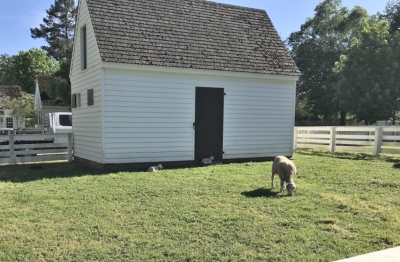The End of Chestnuts? No!
Blight Strikes
I looked up into the tree that I had planted 20 years ago and saw what I had long feared: two major limbs with sparse, undersized leaves. Blight had finally got a toehold on the Colossal chestnut tree, which, for the past 15 years, has supplied us with all the chestnuts we could eat. (“Colossal” is the variety name, apt for the size of the chestnuts it produces.) My first inclination, before even identifying chestnut blight as the culprit, was to lop off the two limbs. Once I got up close and personal with the tree, the tell-tale orange areas within cracks in the bark stared me in the face.
My first inclination, before even identifying chestnut blight as the culprit, was to lop off the two limbs. Once I got up close and personal with the tree, the tell-tale orange areas within cracks in the bark stared me in the face.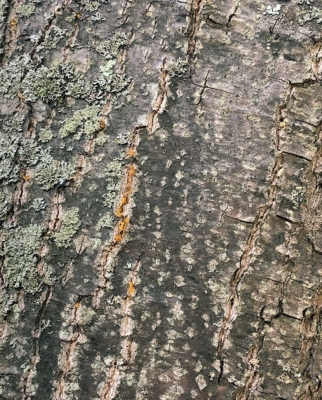 There is no cure for chestnut blight. Removing infected wood does remove a source of inoculum to limit its spread. In Europe, the disease has been limited by hypovirulence, a virus (CHV1) that attacks the blight fungus. Some success has been achieved using a naturally occurring virus found on blighted trees in Michigan.
There is no cure for chestnut blight. Removing infected wood does remove a source of inoculum to limit its spread. In Europe, the disease has been limited by hypovirulence, a virus (CHV1) that attacks the blight fungus. Some success has been achieved using a naturally occurring virus found on blighted trees in Michigan.
There is some evidence, although not confirmed with rigorous scientific testing, that mud packs made from soil taken from the base of a tree, can slow or halt spread of the disease. The mud packs need to be applied to each disease canker and then held in place with shrink wrap, or painted or sprayed on, followed by a layer of latex paint. Not an easy job as you move higher and higher up into the tree.

Colossal, post surgery
Resistance
Chestnut species vary in their response to the blight fungus. American chestnut (Castanea dentata) is very susceptible; the fungus arrived here from Asia in the early 1900s, and within a half a century had killed billions of trees. European chestnut (C. sativa) was also susceptible, but was protected by the naturally spreading fungal virus.
Chinese chestnut (C.mollisima) and Japanese chestnut (C. crenata) both have some resistance — but not immunity — to the disease, and have contributed their genes to resistant varieties. Collosal, in fact, is a hybrid of European and Japanese chestnuts, and it has some resistance to blight. But, evidently, not enough. I am hoping that the previously extremely wet season contributed to the evidence of symptoms, and that some drier seasons will keep the tree alive longer.
I’m not planning to sit back and let my chestnut-eating days shrink away to nothing. For starters, keeping my tree vigorous with pruning and good fertility might keep small cracks, into which new infections could enter, from developing. Also, chestnut trees need cross-pollination, so I do have other varieties planted. Also planted 20 years ago was Marigoule, also yielding fairly large nuts. Some sources say “blight susceptible,” others saw “blight resistant;” my large tree shows no signs or symptoms of blight. Yet.
This spring I planted two more European x Japanese chestnut hybrids. I shouldn’t have felt so confident that MY trees wouldn’t get blighted. Precoce Migoule and Marsol, the two varieties I planted, are, like Marigoule, allegedly “blight resistant,” or not.
Generally, the Chinese varieties and their hybrids are the most blight resistance. And I have two of those, actually one tree on which I grafted two different varieties. Qing is pure Chinese with easy-to-peel nuts having excellent flavor. Peach, the other variety, is also pure Chinese, though the nuts are ho-hum in flavor. Both varieties have borne for me for a number of years, yet the nuts never seem ripe once they drop.
One More Thing . . .
Is your head spinning yet? One more wrinkle in this chestnut saga. It turns out that if a pure or hybrid Chinese variety pollinates a pure or hybrid Japanese variety, the latter gets dark staining of the nuts, with a loss in quality. So I was phasing out (with a chainsaw) some other Chinese varieties I had planted. Now, with blight lurking in the wings, I’m having second thoughts.
Enough negativity about chestnuts. On the positive side, Chestnut trees’ shiny, green leaves are attractive and turn a rich golden yellow color in fall. The nuts are tasty and nutritious. With their high starch and low fat content, they’ve been called “the bread tree.” Gluten-free bread tree, for those who care about gluten.
So, do plant chestnuts. Two different varieties for cross-pollination. If I was planting again — and I might — I’d seek out trees from among Qing, Benton Harbor, Everfresh, Gideon, and Mossberger. Or, for Japanese varieties and their hybrids: Maraval, Marigoule, Labor Day, Precoce Migoule, and Marsol.
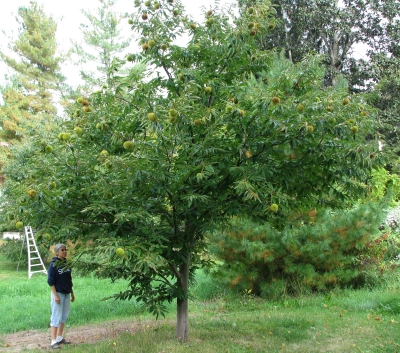
Colossal, at 10 years old
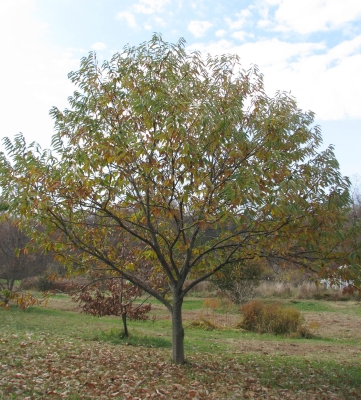
Colossal, in autumn, 12 years old

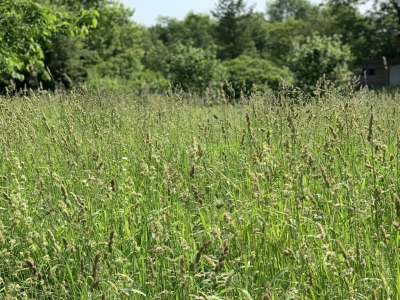 Yet even on the clearest, sunny day — and especially on that kind of day — a dark cloud hangs overhead. Hay fever, literally from hay that is, grasses; and nonliterally, from tree pollen.
Yet even on the clearest, sunny day — and especially on that kind of day — a dark cloud hangs overhead. Hay fever, literally from hay that is, grasses; and nonliterally, from tree pollen.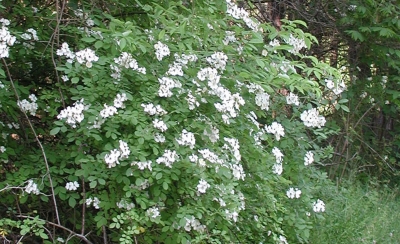 Multiflora rose puts on its show to attract pollinators, such as bees, which transfer pollen from one plant to the next. Hay fever is from airborne pollen blown about by wind, so the flowers of these allergen plants have no need to attract insect pollinators. The non-showy culprits this time of year are grasses and oaks.
Multiflora rose puts on its show to attract pollinators, such as bees, which transfer pollen from one plant to the next. Hay fever is from airborne pollen blown about by wind, so the flowers of these allergen plants have no need to attract insect pollinators. The non-showy culprits this time of year are grasses and oaks.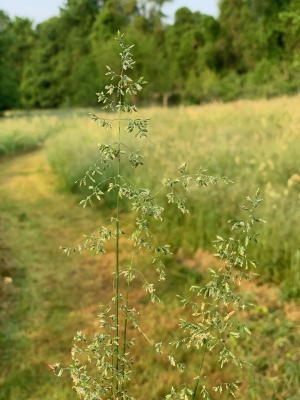
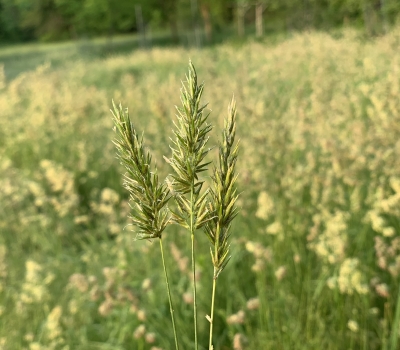
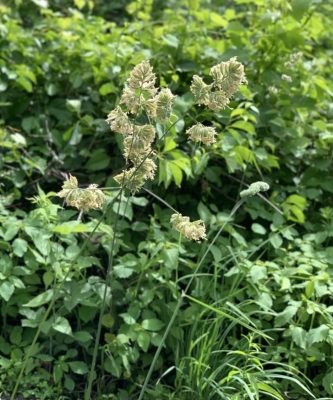


 I wouldn’t find that many earthworms at work in my own grassy meadow. The last glacier, which receded about 12,000 years ago from the northern parts of the U.S., including here in the Hudson Valley, wiped out all the earthworms. Darwin’s meadow was spared because glaciation didn’t reach as far south as where Darwin’s home eventually stood.
I wouldn’t find that many earthworms at work in my own grassy meadow. The last glacier, which receded about 12,000 years ago from the northern parts of the U.S., including here in the Hudson Valley, wiped out all the earthworms. Darwin’s meadow was spared because glaciation didn’t reach as far south as where Darwin’s home eventually stood.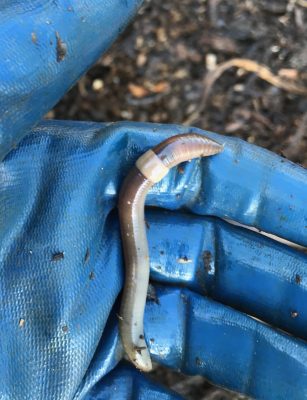 These non-native earthworms are of concern because of the rapidity with which they gobble up organic matter. Their voracious appetites threaten the mountain laurels, rhododendrons, and blueberries that thrive in the organic matter — the leafy mulch — that blankets the forest floors in our nearby Catskill and Shawangunk Mountains.
These non-native earthworms are of concern because of the rapidity with which they gobble up organic matter. Their voracious appetites threaten the mountain laurels, rhododendrons, and blueberries that thrive in the organic matter — the leafy mulch — that blankets the forest floors in our nearby Catskill and Shawangunk Mountains.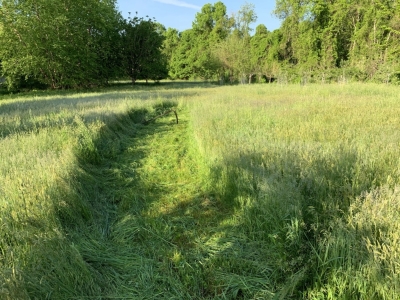 Through summer, pale pink milkweed blossoms dot the meadow. Come late summer, purple flowers of bee balm cap the sea of green grass like ocean whitecaps. And then, later and on into autumn, various species of yellow goldenrod bloom in succession. In the cool of the morning, dew and morning sunlight bring sparkle to the show.
Through summer, pale pink milkweed blossoms dot the meadow. Come late summer, purple flowers of bee balm cap the sea of green grass like ocean whitecaps. And then, later and on into autumn, various species of yellow goldenrod bloom in succession. In the cool of the morning, dew and morning sunlight bring sparkle to the show.
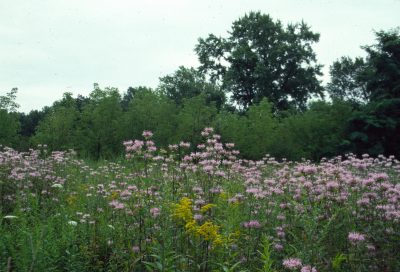


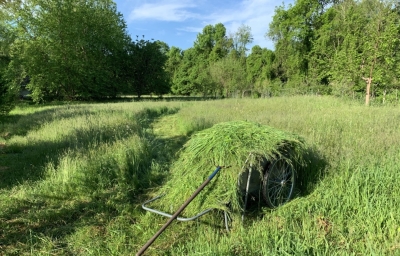
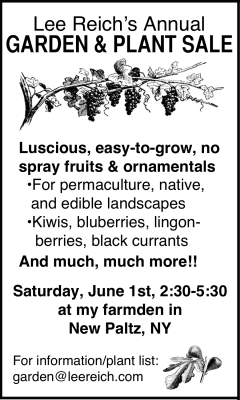
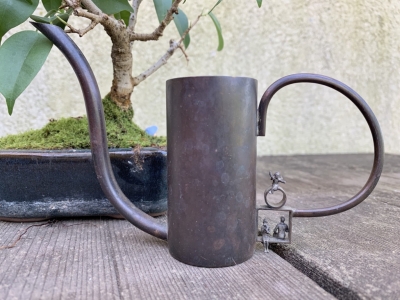 A plant only benefits under these conditions, of course, if it also has enough water at its roots. To that effect, yesterday, in celebration of the second clear, sunny day, I turned on and checked out the drip irrigation system that provides that water to my vegetable plants and blueberry bushes. (With mulches and choice of appropriate plants, all other plants are on their own.)
A plant only benefits under these conditions, of course, if it also has enough water at its roots. To that effect, yesterday, in celebration of the second clear, sunny day, I turned on and checked out the drip irrigation system that provides that water to my vegetable plants and blueberry bushes. (With mulches and choice of appropriate plants, all other plants are on their own.)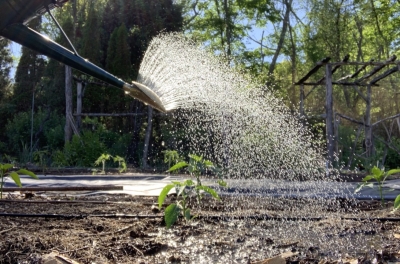 Especially for watering seed flats and small seedlings, a rose needs to be gentle enough to release water sufficiently fast without washing soil around or crushing small plants.
Especially for watering seed flats and small seedlings, a rose needs to be gentle enough to release water sufficiently fast without washing soil around or crushing small plants. 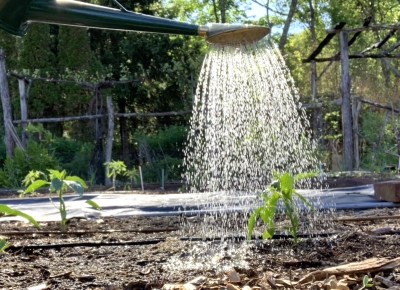 Some debris is bound to find its way into any watering can and thence to the rose, which needs to be removable and easily cleared. Watch out for thin, plastic roses, which are bound to crack after a few cleanings.
Some debris is bound to find its way into any watering can and thence to the rose, which needs to be removable and easily cleared. Watch out for thin, plastic roses, which are bound to crack after a few cleanings.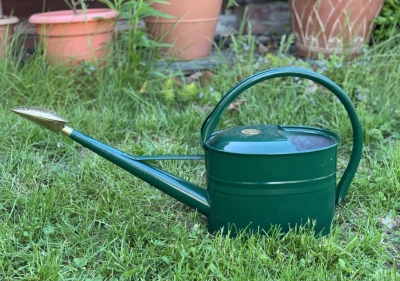
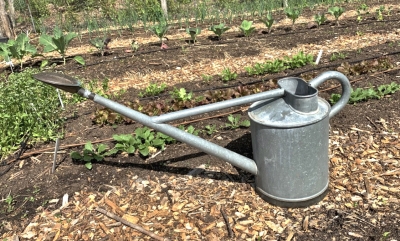
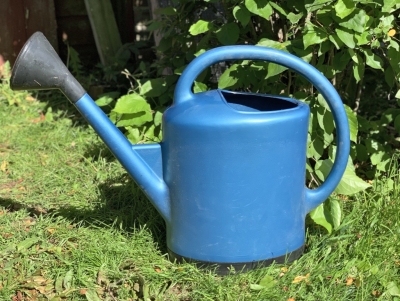
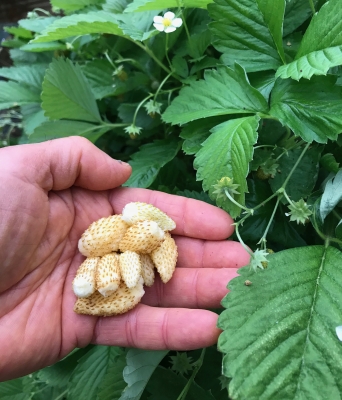 You should be scratching your head by now. Strawberries that are white when ripe? Strawberries perhaps ready for harvest in early May here in the Hudson Valley?
You should be scratching your head by now. Strawberries that are white when ripe? Strawberries perhaps ready for harvest in early May here in the Hudson Valley?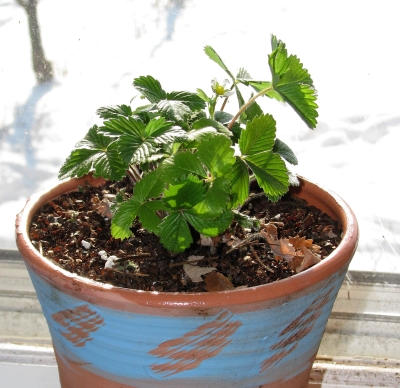 And no, the plants hadn’t resided in my home and aren’t now in my greenhouse to protect them from winter cold. I wanted an earlier crop. I also grow them outdoors.
And no, the plants hadn’t resided in my home and aren’t now in my greenhouse to protect them from winter cold. I wanted an earlier crop. I also grow them outdoors.
 A planting can be started from plants or seeds, the latter started just as are tomatoes. Plants grown from seeds planted in spring will begin bearing their first season.
A planting can be started from plants or seeds, the latter started just as are tomatoes. Plants grown from seeds planted in spring will begin bearing their first season.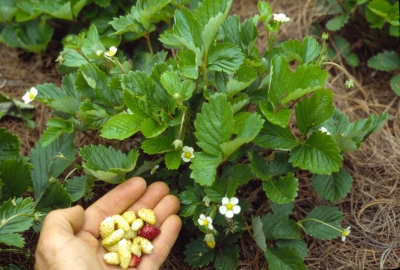 It turned out that all the red-fruited ones were similar, as were the white-fruited ones. For me, the white ones definitely had better flavor. And the flavor could be enjoyed. Why? Because until they are dead ripe, alpine strawberries have taste somewhat akin to cotton soaked in lemon juice. Problem is that birds are very attracted to, and eat, the red fruits no care as to whether or not the berries are dead ripe.
It turned out that all the red-fruited ones were similar, as were the white-fruited ones. For me, the white ones definitely had better flavor. And the flavor could be enjoyed. Why? Because until they are dead ripe, alpine strawberries have taste somewhat akin to cotton soaked in lemon juice. Problem is that birds are very attracted to, and eat, the red fruits no care as to whether or not the berries are dead ripe.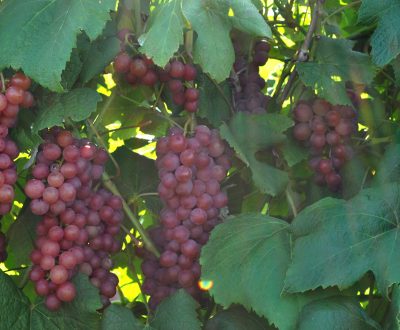
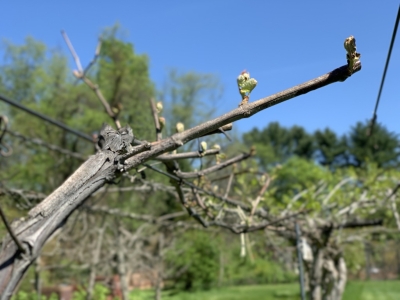
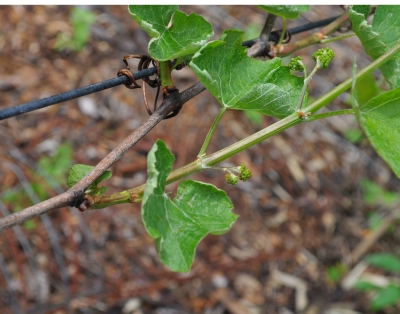

 A spur-pruned vine might instead sport a permanent trunk topped by two arms — permanent arms, called “cordons,” in this case — that run in opposite directions along a trellis wire.
A spur-pruned vine might instead sport a permanent trunk topped by two arms — permanent arms, called “cordons,” in this case — that run in opposite directions along a trellis wire.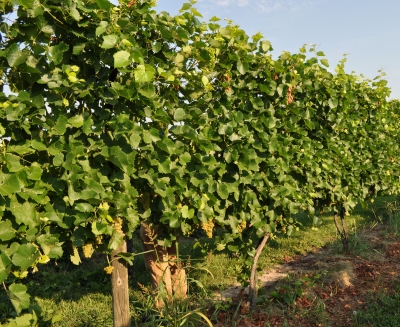


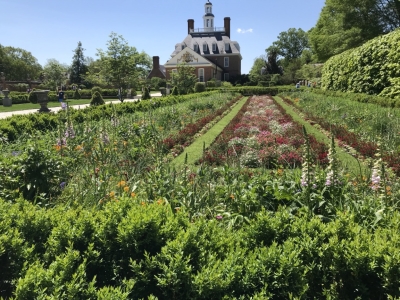
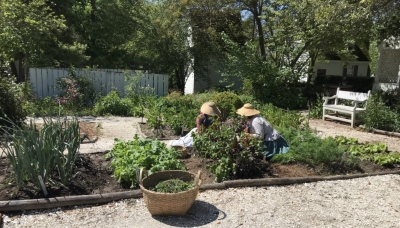 Flowering meads of herbs, flowers, and grasses blanketed the ground beneath most of the orchards, providing — probably unknown back in colonial days — forage for beneficial insects to help protect crop plants.
Flowering meads of herbs, flowers, and grasses blanketed the ground beneath most of the orchards, providing — probably unknown back in colonial days — forage for beneficial insects to help protect crop plants.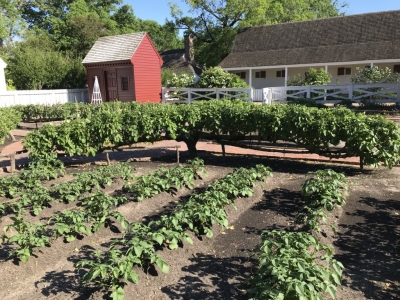
 My own home is brick; even a few four-foot-high walls around my vegetable garden and in other areas would improve the general appearance — and provide, warmer microclimates for cold-tender plants or early harvests. Not that the rustic locust fencing and arbors enclosing my vegetable garden look unsightly . . . but I’d like some brick walls.
My own home is brick; even a few four-foot-high walls around my vegetable garden and in other areas would improve the general appearance — and provide, warmer microclimates for cold-tender plants or early harvests. Not that the rustic locust fencing and arbors enclosing my vegetable garden look unsightly . . . but I’d like some brick walls.